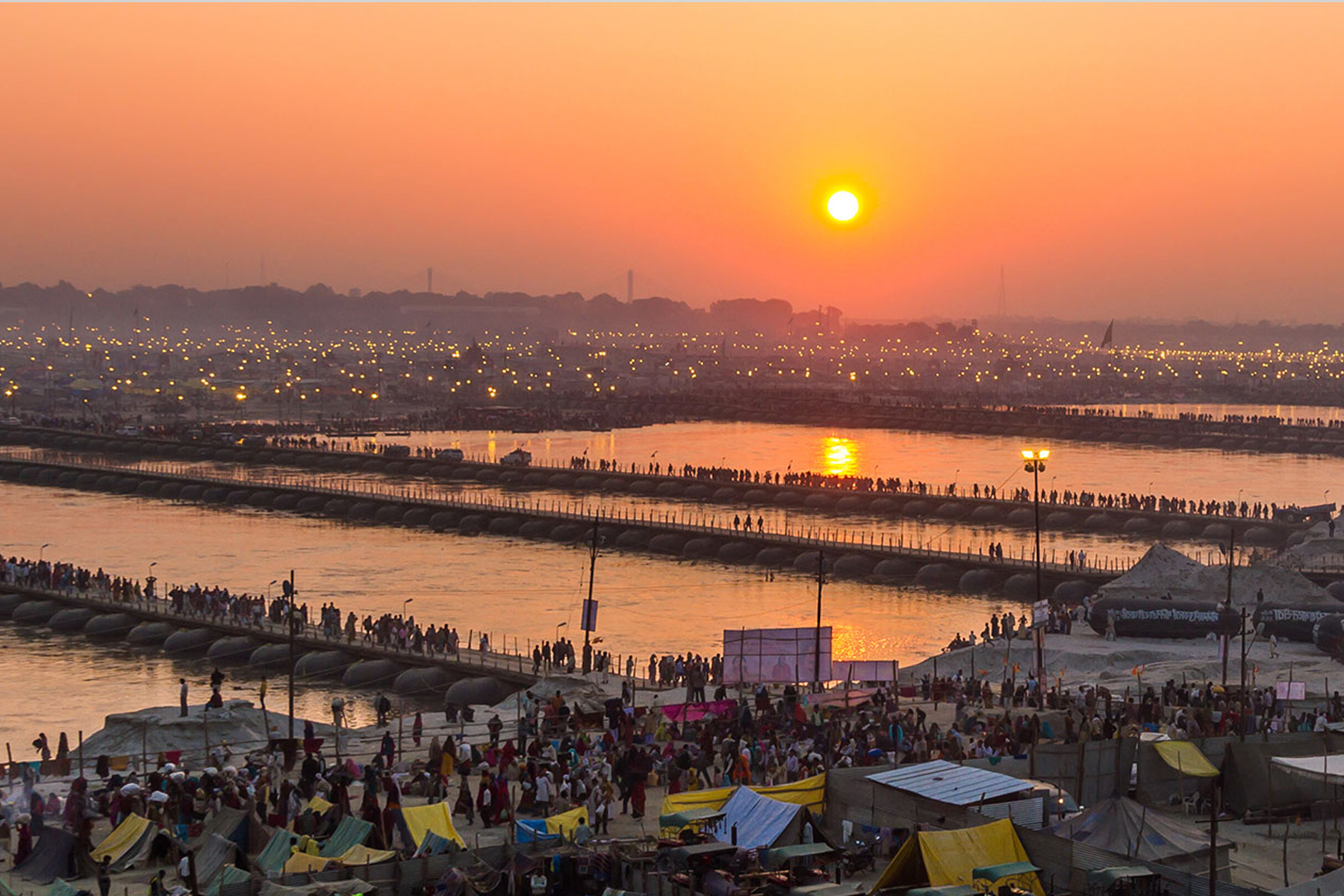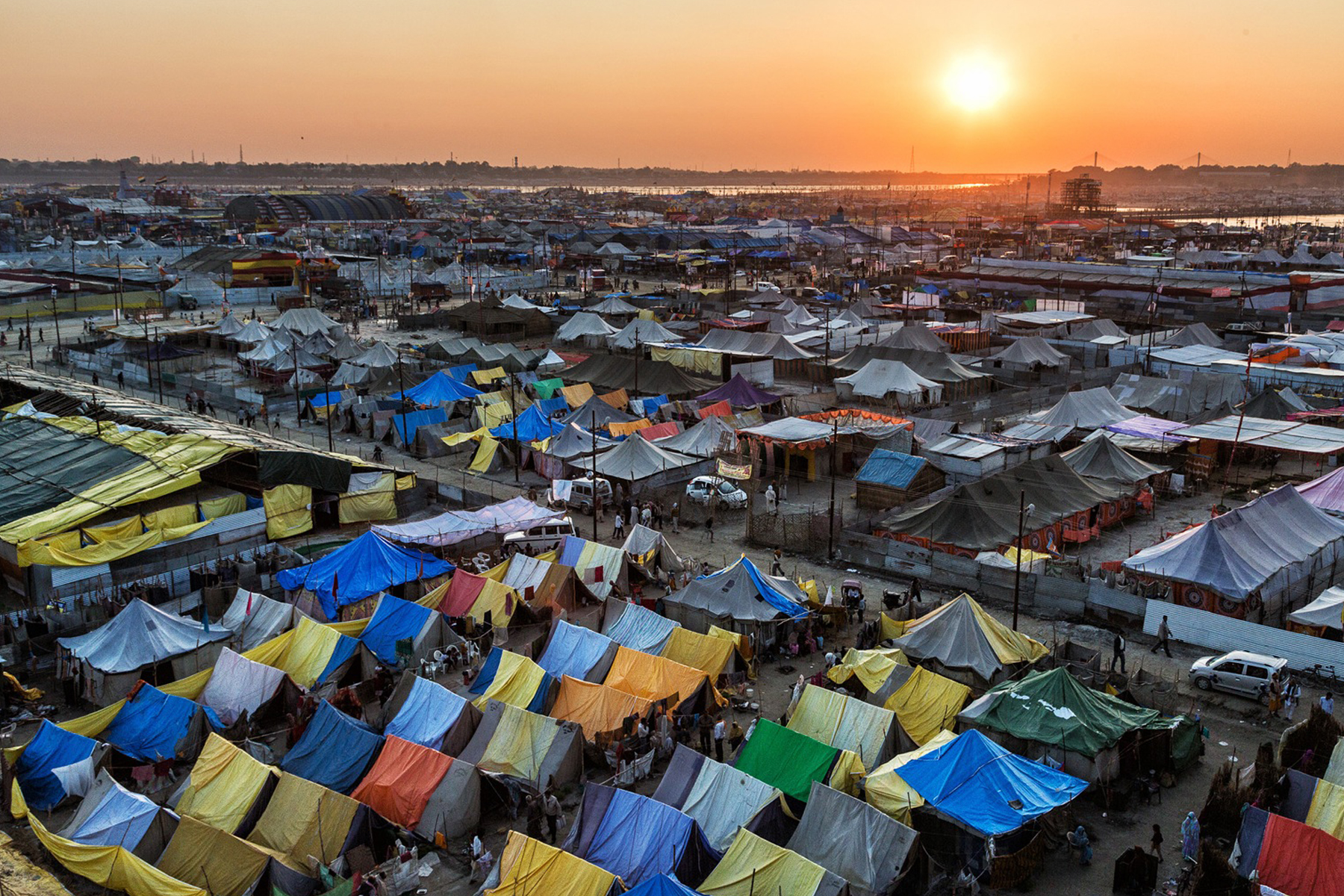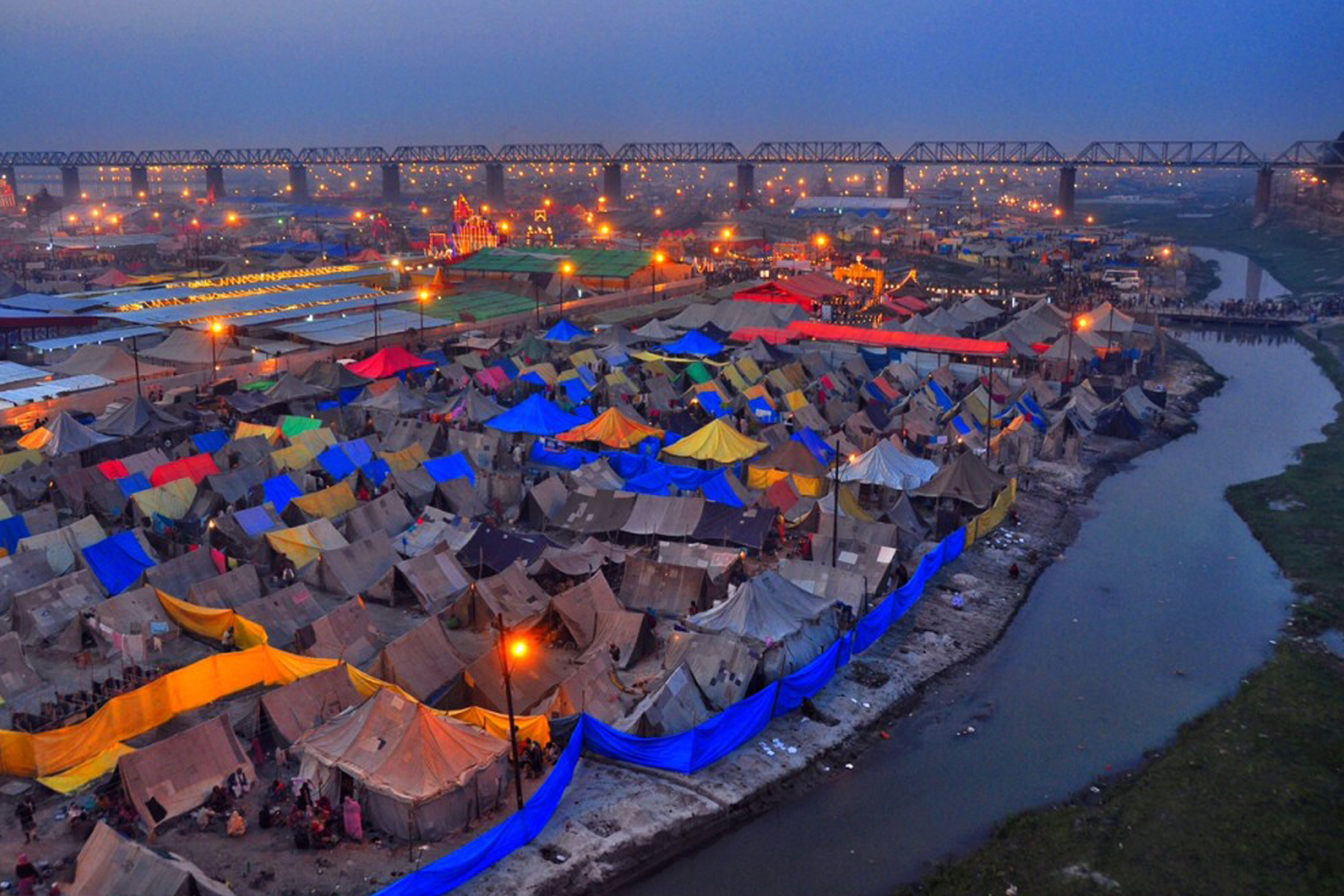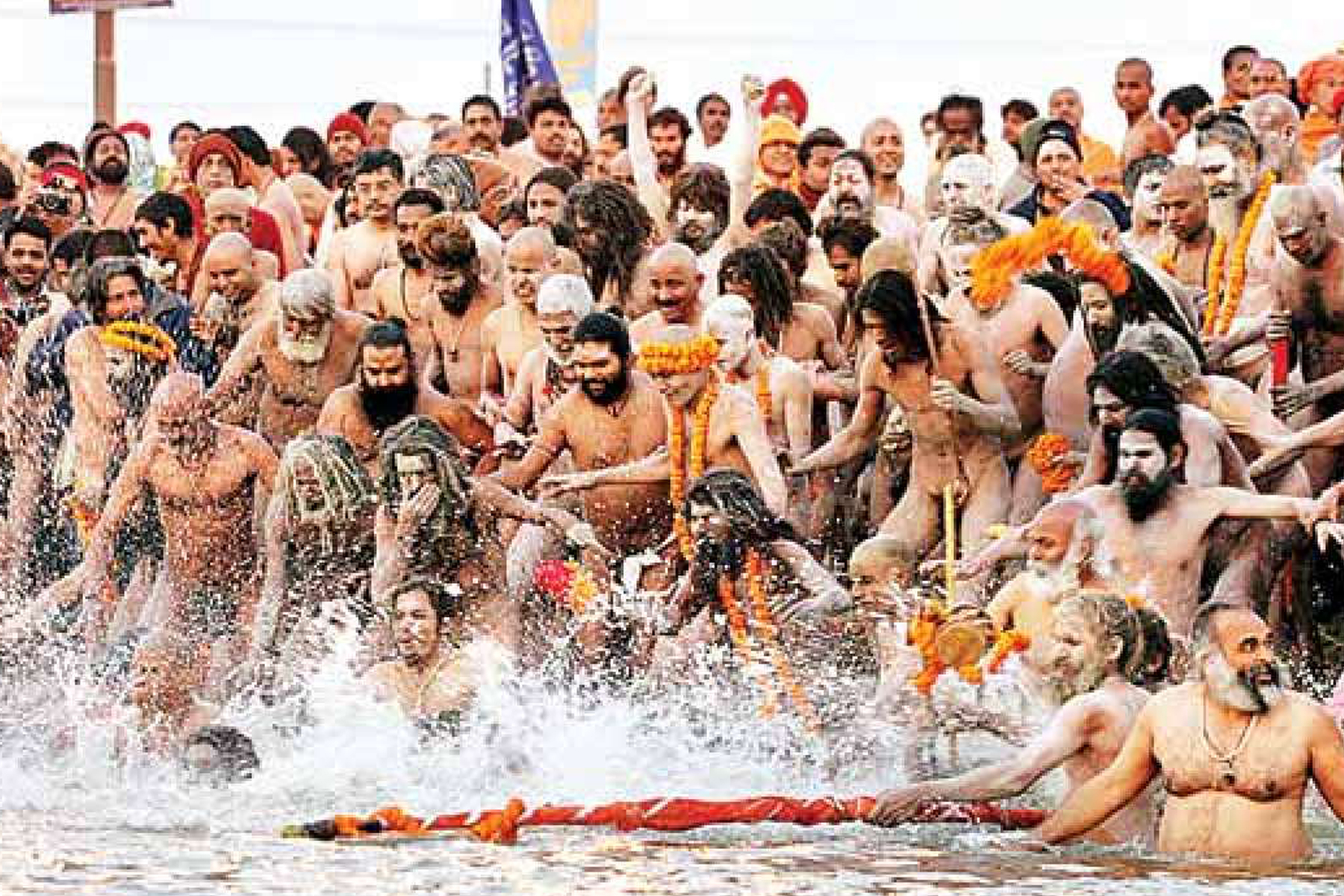Kumbh Mela is the most auspicious sacred festival in India where millions of people flock together to take a holy dip at the river where the Kumbh Mela is taking place. It is believed that participating in Kumbh Mela and taking a bath at the river during the time will free a person from all earthly sins and suffering, make him go to the heavenly abode and help him attain salvation. Another important significance of Kumbh Mela is many people believe that one can get back their long-lost relative or friend during the auspicious occasion of the Kumbh Mela as people from different parts of India assemble in one place during this festival. For example, Mahavatar Babaji was believed to reunite with his disciple Saint Paramhansa Yogananda during one such Maha Kumbh Mela. The entire environment of Kumbh Mela is filled with spiritualism, divine power and religious upliftment.
Where is Kumbh Mela celebrated?
According to the Indian mythology, during a war between the gods and demons regarding who will have the possession of the elixir, some amount of it fell on four places of India- Haridwar, Allahabad, Nasik and Ujjain. Thus, these four places are imbibed with divine powers and are the sites for Kumbh Mela. The main festival occurs on the banks of the auspicious rivers flowing through these four cities namely Ganga flowing through Haridwar, the confluence of the three holy rivers-the Ganges, the Yamuna and the Saraswati at Allahabad, the Godavari flowing through Nasik and the Shipra river flowing through Ujjain.
Rituals of Kumbh Mela
Kumbh Mela is a mass festival where infinite numbers of pilgrims participate to attain salvation. The main rituals that take place during Kumbh Mela are taking a holy dip at the sacred rivers, discussions of Hindu religion and mythologies, feeding the poor people, mass singing of devotional songs, prayer and chanting hymns along the banks of the rivers, offering flowers to the rivers etc. Another important aspect of Kumbh Mela is it is visited by many saints, yogis and hermits who are seen to meditate or chant prayers on the river banks. Some of these sadhus are believed to stay inside caves and come out of them and make themselves visible only during Maha Kumbha Mela.
Types of Kumbh Mela
There are different types of Kumbh Mela.
- The normal Kumbh Mela occurs at an interval of 3 hours.
- The Ardh or half Kumbh Mela occurs after every 6 years in either Haridwar or Allahabad.
- The Purna or full Kumbh Mela takes place after a gap of 12 years at the four holy places such as Haridwar, Allahabad, Nasik and Ujjain.
- The Maha Kumbh Mela occurs after every 144 years.

Bathing dates of Ardh Kumbh Mela 2019 in Allahabad
In 2019, the Ardh Kumbh Mela has fallen on Allahabad from 15th January to 4th March. The bathing dates of the above-mentioned Kumbh are as follows:
- First Shahi Snan is scheduled on the auspicious date of Makar Sankranti which will be on 14th/ 15th January 2019.
- The next date is on Paush Purnima which will be on 21st January 2019
- The most auspicious bathing date which is known as the most royal bath or the second shahi snan will be on Mauni Amavasya on 4th February 2019
- The third shahi snan is scheduled to take place on Basant Panchami which will be on 10th February 2019.
- The next bathing date will be on Maghi Purnima which will be on 19th February 2019.
- The final bathing will be on the auspicious occasion on Maha shivratri on 4the March 2019.



